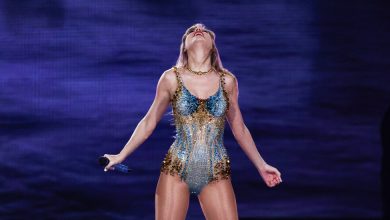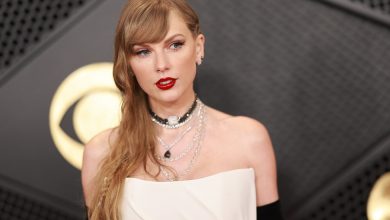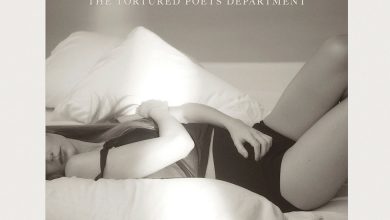Remembering James Caan and His Potent Mix of Swagger and Delicacy

I’m not sure who owned the book, but eventually it ended up in my sweaty young hands. Someone at school had told me about the scene in Mario Puzo’s “The Godfather,” the one in which Sonny Corleone, the reckless eldest son with a Cupid face and a massive endowment, steals off with one of his sister’s bridesmaids. I remember racing through the passage (“her legs were wrapped around his thighs”). It’s no wonder that when I saw Francis Ford Coppola’s film, I was more than ready for James Caan.
He was unforgettably perfect — carnal, wild, exciting. Caan may not be the actor you first think of in relation to “The Godfather,” with its astonishment of legends, but the film is impossible to imagine without his volatile, kinetic performance. Quick to anger, quick to fight, Sonny embodies his family’s terrifying violence in its purest, most unpredictable form, the kind that churns from inside, boiling up like magma. Sonny’s anger will be the death of him; it’s preordained: He must die so that his youngest brother, the deliberate, mercilessly disciplined Michael, can take over the family’s murder business.
Not every star finds as perfect a vessel as “The Godfather.” Talent counts, yes, and as an actor, Caan was more gifted and nuanced than suggested by his tough-guy persona. But the vagaries of both life and the movie business mean that few actors and fewer stars have long, creatively unimpeachable runs. Timing also matters as does taste, greed, grit and representation. Caan, who died on Wednesday at 82, has two supreme masterpieces in his filmography: “The Godfather” (1972) and Michael Mann’s “Thief” (1981). We can argue about the sweep of his career, but there’s no debating the greatness that he brought to it.
Caan’s career emerged from the ashes of the old studio system. Following what was then a familiar career trajectory, he started in TV before moving into film, and was soon terrifying Olivia de Havilland in the schlocky 1964 thriller “Lady in a Cage.” Looking at the film now (don’t bother), their roles are almost comically emblematic of the era’s upheavals. De Havilland was classical Hollywood personified, an elegant emissary of the old studio system, while Caan would soon be among the upstarts who helped create and define that short-lived, creatively intoxicating miracle known as New Hollywood.
“Lady in a Cage” is ridiculous, but it helped set Caan’s career in motion. It would take a while for him to find material worthy of his gift, and the performance is less memorable than his outfit, which includes sandals, a tropical shirt that he later loses, exposing the rug that carpets his torso, and villainy’s de rigueur accessory: a women’s stocking pulled over his face. Notably, he’s also wearing snug-fitting jeans, which, like the sandals, were probably meant to signal his thug’s menacing nonconformity but mostly just draw attention to his body. Tight jeans, as attentive fans know, were a staple of Caan’s onscreen closet.
It was Howard Hawks, one of the geniuses of the old studio system, who shortly thereafter set Caan on his way by casting him first in “Red Line 7000” (1965) and then, more important, in “El Dorado,” a western headlined by John Wayne and Robert Mitchum. “I was this little punk working with Wayne and Mitchum,” Caan said later, recalling how, during the shoot, he and Wayne almost got into it on set. Mitchum brokered the peace, and the stars and the film came together beautifully. It opened in 1967, the same year that “Bonnie and Clyde” shook up the industry and audiences, and swept aside old Hollywood with its violence, daring and bad attitude.
By the time Caan made “The Godfather,” he had established his range in movies as different as Coppola’s directing debut, “The Rain People” (1969), and the 1971 made-for-TV movie “Brian’s Song,” a wildly popular melodrama in which he played the N.F.L. halfback Brian Piccolo, who died young of cancer. Caan also played a tragic football player in “The Rain People,” about a woman (Shirley Knight) who embarks on one of the era’s existential road trips. En route to self-discovery, she picks up Caan’s Kilgannon, a sweet, guileless, brain-damaged former player whose tragically inapt nickname is Killer.
With his thick neck and trapezoidal torso, Caan looked like the athlete he plays, but little about the performance in “The Rain People” is obvious. It’s a heavy role — Killer is the story’s sacrificial lamb — yet Caan, working with Coppola, imbues the part with a subtle, persuasive innocence that doesn’t patronize the character or sanctify his disability. As an actor, Caan certainly could go big and externalize a character’s inner workings (he does a lot around the eyebrows), and Kilgannon has his outsize moments. Yet what makes the character work is the poignant impassiveness that conveys just how brutally life has hollowed him out.
Caan’s ability to convey delicacies of feeling wasn’t a singular gift, but, in his finest roles, it worked contrapuntally with his swaggering physicality and the implied roughness telegraphed by his Bronx-and-Queens-cultivated accent. He sounded like a tough, a delinquent, a bad, potentially dangerous guy, even if his better characters were sometimes more complicated. As Caan’s reputation grew (he was a longtime favorite of this paper’s film critics) and a range of roles opened up to him, he played to and against type and expectation, becoming one of the defining faces of New Hollywood.
It may come as a surprise just how big Caan was in the 1970s, particularly if you’re really only familiar with “The Godfather.” Two years after Coppola’s film blew up, in an essay on “The Last Detail” that consecrated Jack Nicholson as a major star, The Times’s Vincent Canby also named Caan as one of the era’s other young notables alongside Al Pacino, Dustin Hoffman and Caan’s frequent co-star, Robert Duvall. There are different reasons Caan’s reputation dimmed in the ensuing decades; for one thing, while Nicholson was solidifying his fame as a sailor in “The Last Detail,” Caan was repping the Navy in “Cinderella Liberty” (1973).
I love “Cinderella Liberty,” but it hasn’t been canonized like “The Last Detail,” written by Robert Towne and directed by Hal Ashby. But “Cinderella” deserves love, partly because Caan is terrific in it as a sailor who, during an unplanned leave, suddenly becomes involved with a good-time broad (a glorious Marsha Mason). They’re loose and funny and sexy, and together create a raw, unpredictable, memorable romance. Given how aggressively male-dominated so many 1970s classics were, it’s worth remembering that Caan was good with women in more ways than were hinted at in “The Godfather.”
There are all sorts of reasons the decades that followed were not always kind to Caan, including the end of New Hollywood. He made good and forgettable movies, disappeared, re-emerged and matured into avuncular roles. He was discovered by newcomers like Wes Anderson (“Bottle Rocket”) and Christopher McQuarrie (“The Way of the Gun”). For me, though, the second half of Caan’s career is demarcated by “Thief,” the 1981 thriller in which he plays a master burglar. It’s an action film with guns and violence, blowtorches and lots of tough guys, but because this is quintessential Michael Mann, it’s also a romance.
When the film was released, some critics objected to what was seen as its softer, mushier side, which feels like critic-speak for the fact that it features a woman. When Caan’s character isn’t cracking safes or skulls, he is having a tender affair with Tuesday Weld’s skittish restaurant hostess. The two fall in love, have one of Mann’s signature soul-baring conversations across a table and adopt a (stolen) baby. It’s complicated. It’s also beautiful and it gets me every time I watch it. And while the film doesn’t end happily — though maybe it does — it ends happily for any viewer who’s open to it, its deep humanity and to Caan’s transcendent performance.



